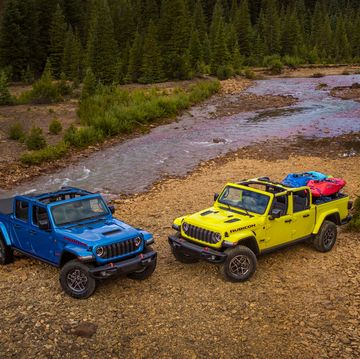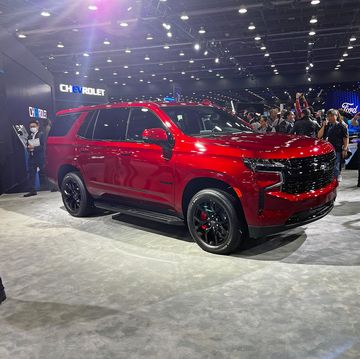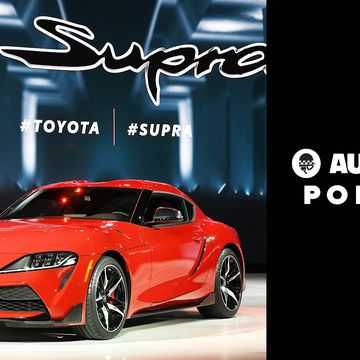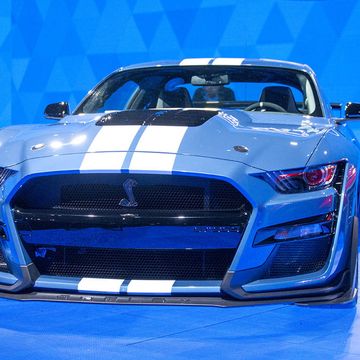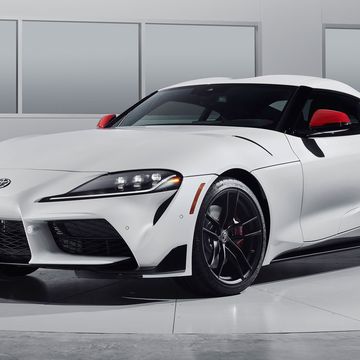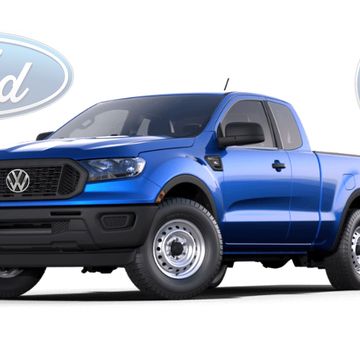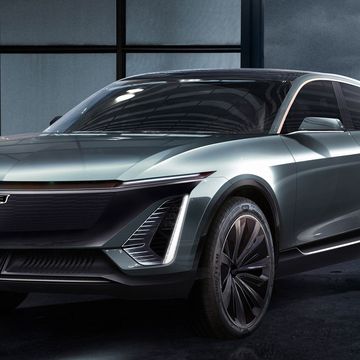We've known for a long time that General Motors was going to respond in a big way to Ford Motor Co.'s lightweight aluminum F-150, and now some details of the next-generation Chevrolet Silverado and GMC Sierra pickups are starting to ooze out ahead of next year's introduction.
Automotive News, citing two sources, reported that the trucks will be available with a bed made of carbon fiber. The Wall Street Journal, citing people familiar with the matter, first reported the plans on Wednesday.
Such a move -- if the publications' sources are correct -- would likely shave hundreds of pounds from the trucks' curb weight. It would also probably add significant cost to the truck, which would mean higher sticker prices or lower margins or some combination of the two.
Combine the lightweight bed with GM's mixed-materials strategy of using high-strength steel, aluminum, magnesium and cast parts in the body in white, and GM -- on paper -- looks to be able to deliver a truck that will weigh significantly less than competitors such as the Ford F-150.
GM has been giving its mixed-materials manufacturing system a dry run on the low-volume Cadillac CT6 sedan, which when launched in 2016 was the lightest car in its class and the class below. By using different metals for the body structure, GM can save money on materials while producing a stronger, stiffer body. But using different metals greatly complicates manufacturing.
Not only do the right parts have to be delivered to the right place at the right time, but the number and type of fasteners also varies. Last May, GM let reporters peek behind its manufacturing r&d curtain, showing us how it was taking weight out of its vehicles. GM took issue with Ford's approach of using aluminum for the F-150's entire body in white.
"No single material is the right answer for every part of the body," Charlie Klein, executive director of GM's global CO2 strategy and energy center engineering, told me at the time. "Each material has its own properties. We use the best material for each component, the right material in the right place and the right amount of material."
Lowering weight, of course, brings many benefits, such as improved fuel economy, better performance and shorter stopping distances.
So, let's assume GM's new trucks -- it's possible they will debut next month at the Detroit auto show -- will be the lightest on the market.
The next question is: How is GM going to leverage that advantage?
The F-150's fuel economy didn't improve much initially when the truck switched from steel to aluminum. Instead, Ford decided to increase the amount of work the truck could do by raising the vehicle's towing and hauling ratings. That was a smart move.
If there is one thing that gets the attention of truck buyers, it's how hard a truck can work. Since Ford launched the aluminum F-150 in 2015, it has rolled out powertrain upgrades -- such as a new 2.7-liter V-6, and a 10-speed automatic transmission -- that have boosted fuel economy to a class-leading 20 mpg city, 26 highway and 22 combined. (Ram's 2018 1500 diesel is not yet listed in the EPA fuel economy guide.)
GM could mimic Ford and translate the weight savings into a bigger workload. It could also go for outright fuel economy leadership -- or a combination of the two. Even though gasoline is relatively cheap, fuel economy really matters to truck drivers. They don't like stopping at filling stations.
Ford has consistently outfoxed GM for decades with the F-150, continually adding industry-first safety, convenience and luxury features and introducing the company's newest powertrains. Most importantly, Ford really gets into truck customers' heads by figuring out what buyers want.
The new Silverado and Sierra will be the biggest test for GM's product development chief Mark Reuss. With such vehicles as the Cadillac CT6, Chevrolet Volt and Bolt, and the Cadillac V-series high-performance cars, Reuss has engineered a remarkable turnaround at GM.
But the work of his team has been undermined in my view by ineffective marketing -- when was the last time you saw an ad for the Bolt EV, the Colorado diesel, the first truck to get an EPA 30 mpg highway rating, or the Cruze diesel, which has a 52 mpg highway rating?
There isn't a weak vehicle in any of GM's four surviving brands.
For GM's new trucks, here's what I expect:
- Outright fuel economy leadership in city, highway and combined ratings.
- Outright fuel economy leadership while a truck is towing and hauling -- perhaps the F-150's only weak point.
- Lowest curb weight, all models.
- A robust repair program at launch that removes doubt about dealers and body shops being able to quickly and correctly repair accident damage.
- Industry best stopping distances.
- At least one new, exclusive technology, such as Dynamic Skip Fire, the next-generation digital cylinder cut-off system GM and Delphi Technologies is developing with Tula Technology Inc., a Silicon Valley startup.
- An optional V-6 diesel to compete with the one coming in the F-150 and with the Ram 1500 diesel.
GM's full-size pickups have to make a big statement. These are GM's cash cows. They must be successful for GM to pay the bills to develop autonomous cars and to pay for the next generation of its electric vehicles and fuel cell technology.
And this time, all of GM's cylinders -- engineering, manufacturing, marketing, etc. -- have to get it right. Ford, under the same pressure, is not going to ease off the throttle on F-series upgrades. Competition is getting stronger, too.
Ram outsold Silverado three times this year in monthly sales, and the big pickups from Toyota and Nissan have seen major upgrades resulting stronger sales, especially for the Nissan Titan.
With the new Silverado and Sierra, we're about to see what GM is really made of.
"How GM can gain from carbon fiber in trucks" originally appeared in Automotive News on 12/8/2017
